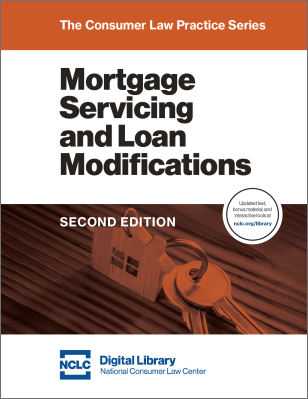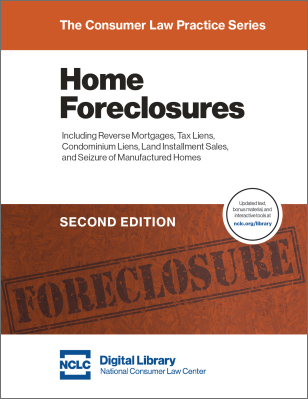A significant number of homeowners do not have a deed in their name, which puts them at risk of losing their home to a variety of threats. Tangled title situations can occur when homes are passed on from generation to generation without a will or without the filing of a probate petition. Sometimes, even when a homeowner passes away with a will, probate delays may drag on for a year or longer, keeping a home’s title unclear.
Tangled titles often go hand in hand with a variety of problems including keeping up with payments for the mortgage, property tax, or utility, such as when the family had relied on the deceased’s income or where payment obligations are missed immediately prior to and after the homeowner’s death. Property tax bills may skyrocket if the homestead exemption is removed and heirs are not able to obtain the exemption in their name. Other times, much-needed natural disaster assistance may be stymied without proof of ownership of the home.
This article focuses on consumer strategies for dealing with mortgages, property taxes, utilities, and natural disasters when tangled titles stand in the way of consumers obtaining otherwise available assistance. The article lists eight common problems, explains the basics about tangled titles, and offers solutions to resolve each of these eight pressing problems.
Common Problem Areas When Consumers Are Faced with Tangled Titles
There is no shortage of situations where tangled titles can be a problem, including:
- Keeping up with mortgage payments and seeking information from mortgage servicers;
- Obtaining a mortgage loan modification;
- Successors seeking to assume the deceased’s mortgage;
- Staving off a foreclosure;
- Reverse mortgages;
- Property taxes and tax seizures;
- Seeking emergency relief and insurance coverage when a natural disaster damages a home;
- Obtaining utility service and various forms of assistance.
The Basics About Tangled Title
It is not uncommon for homes to be passed on informally from generation to generation without the heirs going through the legal process of filing a probate court action. This can result in multiple heirs jointly owning the home as tenants in common, often referred to as “heirs’ property” or “tangled title.” Even though an individual may have been residing in a home for decades with all the trappings of ownership, they may have never obtained the deed in their own name.
Another example of tangled title arises where an individual whose name is on the deed passes away and, even when they have a will, it can take a long time—even years—for the probate court to confirm ownership of the home in the name of the new owner. For example, an adult son is living with his mother, the mother passes away, and the son remains in the home. If the mother left the home to her son in her will, the will must be admitted to probate and any heirs at law must be notified. If there was no will, the home passes through intestate law. In such a situation, it may be possible to get the other heirs who inherited a partial ownership interest in the house to convey their interest to the son. The son does not have proof of his ownership, however, until a probate court order, executor’s deed, or administrator’s deed conveys the property to him. The title is “tangled” until this happens.
Title is passed most easily upon death where the home is in the name of joint tenants with the right of survivorship. Title then automatically passes to the survivor without the need for probate. Nor is probate necessary if a homeowner set up a revocable or living trust and had designated the home as a trust asset prior to death.
In other situations, after the homeowner’s death, the home must go through probate. While probate should untangle the title, probate takes time—often over a year—and ownership of the home will be unclear during that time. The probate process can be even slower when there are difficulties locating some of the heirs at law, ambiguities in the will, defects in the will, multiple heirs claiming ownership of the same residence, or intra-family conflicts. The situation can be even more complicated if the deceased did not have a deed to the home, due to having inherited it without filing probate.
Once probate is filed and an estate representative (executor or administrator) is appointed, that person can usually take certain actions related to the home to obtain some information from mortgage companies and other creditors. Certain fees will be required to initiate probate, and some probate courts allow for a poverty fee waiver. Probate can proceed without the help of an attorney, and the probate court may offer some information to unrepresented individuals. But an attorney with probate experience can make sure everything is done properly and can speed the process. Lower-income surviving relatives can go to www.lawhelp.org to locate the nearest local legal services office and request assistance.
After probate is complete, a new probate deed (administrator’s deed or executor’s deed) is drafted and must be recorded at the local registry of deeds. A lawyer, title company, or other real estate professional can help with this process.
Probate might not always be necessary if the homeowner died without a will. In some states, if a decedent died without a will and the death occurred more than two or three years ago, it is possible to record an affidavit of descent (also known as an heirship affidavit) in the deed records. That document can serve as proof of ownership having passed to the heirs at law. To determine if an heirship affidavit is sufficient proof of ownership in your state, consult with a title attorney or the state title standards.
The best way to speed up or avoid probate is to engage in estate planning prior to the homeowner passing—such as changing the deed to a joint tenancy with right of survivorship or placing the home in a trust. Some states allow for execution of a transfer on death deed, which conveys ownership of the home by operation of law upon the death of the current owner. If there is a will, it is important to make sure the will is clearly drafted and properly witnessed. The family or other trusted individuals should understand the homeowner’s wishes and know where important documents are kept, including the will, the deed, a mortgage, or any trust.
Unfortunately, attorneys often are faced with clients without proper estate plans and where tangled title causes serious consequences. This remainder of this article focuses on the eight problems with tangled title listed above and sets out strategies to overcome them.
1. Keeping Up with Mortgage Payments and Seeking Information from Mortgage Servicers
When at the time of death, a deceased homeowner was current on the mortgage payments, it is important for potential heirs, family members, or others with an interest in the home to continue making mortgage payments if possible. The mortgage servicer is unlikely to care who makes a payment and may not even know the homeowner is deceased. There is no requirement that a mortgage payment originate from an individual whose name is on the deed. When property is transferred because of a death, the mortgage lender may not exercise a due-on-sale clause. The heirs have the right to simply keep paying the existing mortgage. SeeNCLC’s Mortgage Servicing and Loan Modifications § 4.8.3.1; NCLC’s Home Foreclosures § 5.10.
The Consumer Financial Protection Bureau (CFPB) recognized that many heirs were having difficulty getting information from the mortgage servicer as to the status of mortgage payments after the death of the borrower. The CFPB therefore issued a rule in 2016 (which took effect in 2018) defining owners who obtain their ownership interest in the home through certain “exempt transfers” as a “successor in interest” who are entitled to mortgage servicing protections under RESPA and TILA. RESPA and TILA provide that “confirmed successors in interest” have the same rights to this information as the original borrower. A confirmed successor in interest is someone who became the owner of the home through a death, divorce, or other intra-family transfer and where a servicer has confirmed the successor in interest’s identity and ownership interest. See NCLC’s Mortgage Servicing and Loan Modifications § 3.2.3.
In tangled title situations, it can be a challenge proving that an heir who is attempting to save the home has successor in interest status. The mortgage servicer is allowed to request reasonable proof of ownership. If the borrower died with a will, the will may be sufficient to prove successor in interest status. Many servicers, however, will require a probate court petition or final probate order. If the borrower died without a will, the servicer should be willing to accept an heirship affidavit, especially if the state title standards approve of their use. If an executor has been appointed, the mortgage servicer may be willing to discuss the mortgage with the executor after submission of a death certificate and proof of appointment. See NCLC’s Mortgage Servicing and Loan Modifications § 3.10.4.
More importantly, RESPA Regulation X provides that if a servicer receives a written request from a person that “indicates” that the person “may be a successor in interest,” the servicer must respond by providing the potential successor in interest with a written description of the documents the servicer reasonably requires to confirm the person’s identity and ownership interest. The servicer must also provide the contact information for further assistance, including a phone number. Reg. X, 12 C.F.R. § 1024.36(i)(1). The servicer must provide the same information to the potential successor in interest as it would to the original mortgage loan borrower.
Documents that “indicate” that a person may be a successor in interest, triggering this obligation, include (without limitation) a written statement that there has been a transfer of ownership or that the borrower has been divorced, separated, or died, or a loss mitigation application from a person who is not the borrower. See Official Interpretations of Reg. X § 1024.36(i)-1. If a written request that falls under this section fails to provide sufficient information to allow a servicer to determine what documents will be necessary to confirm successor status, a servicer may respond by giving examples of documents typically used to confirm successor status and explaining that a person may obtain a particularized list of the documentation needed by providing specified additional information. Reg. X, 12 C.F.R. § 1024.36(i)(2).
For more on the rights of a someone who may be a successor in interest to obtain information from a mortgage servicer, see NCLC’s Mortgage Servicing and Loan Modifications § 3.3.4.3.
2. Obtaining a Mortgage Loan Modification
Sometimes prior to their death, the decedent may have fallen behind on mortgage payments, and the homeowner’s death may have exacerbated the family’s financial hardship such that heirs are not able to bring the loan current. Heirs may wish to apply for a loan modification. If the loan is owned by Fannie Mae or Freddie Mac or insured by FHA, VA, or the USDA, applicable investor rules typically allow for a simultaneous loan modification and assumption by an occupant heir.
Loan modification rules that apply to most residential mortgages, including Fannie Mae, Freddie Mac, and FHA rules, require a confirmed successor in interest after a death or divorce to be evaluated for a modification under the same rules that would apply to the borrower. If they qualify for the modification based on documented household income, the servicer should approve the successor for a simultaneous loan modification and assumption of the prior owner’s mortgage loan. NCLC’s Mortgage Servicing and Loan Modifications § 4.8.4.4. Regulation X also requires that confirmed successors in interest be treated as borrowers for purposes of RESPA’s loss mitigation provisions. Reg. X, 12 C.F.R. § 1024.30(d). See also NCLC’s Mortgage Servicing and Loan Modifications § 3.2.3.
It is more difficult to obtain a loan modification when an heir cannot yet prove their ownership status due to a pending (or not yet filed) probate case. Nevertheless, an executor or other representative of the deceased’s estate can press for a loan modification. Some courts hold that an executor or other representative of the borrower’s estate may pursue a RESPA claim on behalf of the deceased borrower for failure to offer a loan modification. See NCLC’s Mortgage Servicing and Loan Modifications § 2.11.
3. Successors Seeking to Assume the Deceased’s Mortgage
Sometimes an heir may wish to assume the decedent’s mortgage loan after documenting their ownership of the home. Assuming the mortgage can be difficult to do outside of a loan modification, as many mortgage servicers misapply the law and attempt to require a full underwriting process. Federal law provides that successors can assume the prior owner’s mortgage if a transfer is in connection with the death of the borrower, a divorce, or a deed to a spouse or child of the borrower. 12 U.S.C. § 1701j-3. A successor’s assumption of the loan does not relieve the original borrower (e.g., the borrower’s estate) of liability for the debt unless the creditor agrees, and a creditor may condition the release of the original borrower on the creditworthiness of the assuming party. See NCLC’s Mortgage Servicing and Loan Modifications § 3.2.3.
On the borrower’s death, confirmed successors not only can assume the mortgage but at the same time be evaluated for a loan modification. See Fannie Mae Single Family 2015 Servicing Guide, at D1-4.1-02; Freddie Mac Single Family/Seller Servicer Guide § 9207.2; FHA Servicing Handbook § III.A.2.j.ii(B)(4) (Dec. 30, 2016) (locate this section by searching the PDF for “Non-Borrowers who acquired title through an exempted transfer”); NCLC’s Mortgage Servicing and Loan Modifications § 4.8.
Nevertheless, these rights apply after there has been a transfer of ownership to the successor. Where title is tangled, it is important to complete the probate filing or affidavit of heirship to prove successor status. Nothing stops potential successors or the deceased’s estate from making payments under the existing mortgage in the meantime, however. Typically, if an heir can afford the regular mortgage payments, assuming the loan may not be necessary. The heir can simply make the payments and get confirmed as a successor in interest.
4. Staving Off a Foreclosure
Where a homeowner is deceased and the home is subject to imminent foreclosure, an important backup option is for an heir to file chapter 13 bankruptcy. Most bankruptcy courts hold that a successor homeowner may include the mortgage in a chapter 13 plan, even if the successor is not on the mortgage note and has no personal liability on the debt. In bankruptcy, a “claim” includes a debt secured by the debtor’s home, even if debtor has no personal liability on the note.
Once the heir's interest in the property comes into the bankruptcy estate, it is protected by the automatic stay. A successor then may use a chapter 13 bankruptcy to de-accelerate the note and to cure the arrears, even if they have not assumed the debt. See NCLC’s Mortgage Servicing and Loan Modifications § 4.8.5. The heir will have to continue to make regular monthly mortgage payments in addition to a portion of the arrears each month for a period of three to five years.
This right to use a chapter 13 filing to stop a foreclosure even applies in a tangled title situation where the bankruptcy debtor is not a confirmed successor in interest. If the debtor has even a “contingent” interest in the property, the property is part of the debtor's bankruptcy estate and a chapter 13 automatically stops the foreclosure and allows curing of the default. Thus, the stay should apply even if a probate court has not yet established the debtor as the property’s owner. Attorneys should consult their state law regarding when property vests in heirs and any other state law nuances. It is wise to notify the secured creditor that the stay is in effect prior to the foreclosure sale, and if they dispute the applicability of the stay, to file a comfort motion to confirm that the automatic stay applies to a property. See NCLC’s Mortgage Servicing and Loan Modifications § 4.8.5. A potential heir filing a chapter 13 bankruptcy must cure the arrears through the chapter 13 plan, and thus loses this money if the probate court ultimately awards the home to a different heir.
5. Reverse Mortgages
When a reverse mortgage borrower dies, their heirs do not have the option to remain in the home under that existing mortgage. Instead, the reverse mortgage becomes due and payable when the last remaining borrower (and any spouse living in the home) has died. Heirs generally have up to six months (with two possible extensions) to pay off the loan in full or pay 95% of the home’s market value, whichever is less. If they do not wish to pursue a sale of the home or a short payoff at 95% of fair market value, then the lender will foreclose.
One important exception is that a surviving spouse can remain in the home despite not being a borrower on the reverse mortgage loan. When that surviving spouse passes away or leaves the home, then the home is lost unless heirs at that point pay off the loan. See NCLC’s Home Foreclosures § 15.3.3.3.
6. Property Taxes and Tax Seizures
Even with tangled title, there should be no problem in continuing to keep property taxes current if the potential heirs are able to pay them—the municipality will not require that a particular person pay the taxes. One problem that often arises is that the homestead exemption may drop off after the death, causing the taxes to increase, unbeknownst to the heirs. The ability for heirs who have not yet filed probate to obtain a homestead exemption in their name varies from state to state. Therefore, the tax bill may increase substantially, if the homestead exemption is temporarily lost. The property value may be reassessed for property tax purposes upon the death of the original owner which can also cause an increase in taxes. It is important that heirs apply for the homestead property tax exemption as soon as possible.
If property taxes are in serious arrears, potential heirs may be unable to bring them current. Just as with a mortgage foreclosure, even where there is tangled title, the broad definition of the bankruptcy estate, which includes contingent and equitable interests, means that a potential heir can use a chapter 13 bankruptcy to stop a tax sale or other creditor action even if a probate or other proceedings has not been completed. Filing the chapter 13 bankruptcy brings the potential heir's interest in the property into the bankruptcy estate, so that it is protected by the automatic stay. An heir may even be able to avoid a tax foreclosure in bankruptcy. NCLC’s Home Foreclosures § 16.3.3.2.9.
Of course, potential heirs can also bid at the tax sale and may be able to obtain a mortgage to pay the sale price. Even more practical is that there is a right of redemption after a tax sale, and a potential heir may be able to pay the redemption amount in a chapter 13 bankruptcy. See NCLC’s Home Foreclosures § 16.4.
7. Disaster Assistance and Homeowner’s Insurance
Tangled titles can complicate the receipt of disaster relief since there are proof of ownership requirements for FEMA’s Individuals and Households Program, which provides funding for temporary housing, repairing and replacing housing, and other housing and emergency needs to families who have lost their homes in a presidentially declared disaster. For some relief, proof of occupancy is enough and this can be proved easily if the home in fact is occupied at the time of the disaster.
Other forms of disaster relief require proof of ownership and not just proof of occupancy.
Fortunately, FEMA has recently relaxed rules about proving ownership, and this can be shown in various ways despite the tangled title, including:
- Real property insurance, homeowners or flood insurance in the individual’s name.
- Receipts for major repairs or improvement within the last five years.
- Property tax receipt or property tax bill.
- A public official’s letter. The public official’s statement (e.g., police chief, mayor, postmaster) must include the name of the applicant, the address of the disaster-damaged residence, the period of occupation, and the name and telephone number of the official providing the verification.
- Survivors with inherited properties may self-certify ownership as a last resort.
The date of eligible documents can go back one year before the disaster. Homeowners with the same address from a previous disaster only need to verify ownership one time. Additional information about helping homeowners impacted by natural disasters is found in NCLC’s Mortgage Servicing § 12.1.
With respect to hazard insurance, heirs may have stopped paying homeowner’s insurance for the same reason’s they may have been unable to pay the mortgage. If there is a mortgage in place, the mortgage servicer has likely purchased force-placed insurance. Getting confirmed as a successor in interest would give heirs certain protections related to force-placed insurance under RESPA. See NCLC’s Mortgage Servicing § 3.6.
8. Utility Service and Assistance
Utility service can typically continue under the name of the deceased if someone continues to make the payments. The same is true of LIHEAP fuel assistance.
If the deceased has a large unpaid balance, someone else residing in the house can seek service in a new name and in some cases may not have to pay off the deceased’s balance to obtain the new service. Generally, there is no requirement to show ownership of a residence to obtain new service. However, some municipal utilities may insist that service be in the name of the owner.
If service is put in a new name, that name should be forwarded to a community action agency for purposes of LIHEAP fuel assistance—the two names must match to receive the fuel assistance. But there is no requirement that the LIHEAP recipient be the property owner.
If service is put under a new name, the deceased’s estate will owe the back-due amount, but the new person living in the house may not be so obligated. Nevertheless, someone seeking the service under a new name may have to pay a security deposit and utilities may try to deny service until payment is made on the amount the deceased is delinquent. But courts and utility commissions generally enforce the right of new residents not to have to pay the old bill before obtaining new service. See NCLC’s Access to Utility Service § 2.2.3.2.
About twenty state utility commission regulations do require payment of the old bill for certain closely related persons, and in other states the doctrine of necessities or the family expense doctrine may require that a spouse pay the delinquent bills of the other spouse, and rural electric cooperatives and municipal utilities may have requirements that the old bill be paid first no matter the new resident. See NCLC’s Access to Utility Service §§ 2.2.3.2, 2.2.3.5. Some municipal utilities may allow service in the new name but place a lien on the home for the unpaid amount.
Ownership may be relevant to an application for assistance under the federal Weatherization Assistance Program or other programs that help pay for heating or cooling equipment or other energy-saving investments. These programs often seek the owner’s permission before making changes to the residence, even when someone else is the one applying for assistance. On the other hand, unlike a mortgage situation where the name on a deed may be required, ownership standards in this situation may be a bit more relaxed.




